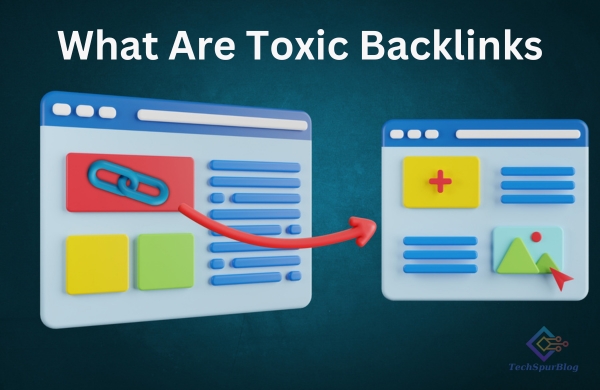
Introduction
In the world of search engine optimization (SEO), backlinks play a crucial role in determining the authority and relevance of a website. High-quality backlinks can boost your site’s rankings in search engine results, while toxic backlinks can have the opposite effect. Toxic backlinks are hyperlinks originating from websites that have the potential to damage both your site’s standing and your SEO endeavors. In the forthcoming sections, we will explore the notion of toxic backlinks, assess their consequences on your website, and elucidate methods for recognizing and managing them.
Understanding Toxic Backlinks
Toxic backlinks are links pointing to your website from low-quality, spammy, or malicious sources. These sources may include link farms, PBNs (Private Blog Networks), websites with thin or irrelevant content, or those associated with black-hat SEO practices.
In cases where prominent search engines such as Google discern an abundance of toxic backlinks directed at your site, there is a possibility of your website incurring penalties. These penalties can result in a decline in your site’s search rankings and a reduction in the flow of organic traffic.
Also Read: Multilingual SEO: 5 Tips to Improve Your Keyword Rankings Across Languages
Where do toxic backlinks originate from?
In contemporary times, a majority of the toxic links that search engines can detect emanate from sources categorized as SPAM websites. These SPAM sites are purposefully constructed for the singular aim of generating artificial backlinks. Notably, there exists a substantial number of SPAM websites tailored to serve negative SEO strategies. Vigilantly overseeing your backlink profile proves indispensable for identifying any aggressive SPAM-driven link building.
By exercising this diligent watchfulness over your backlinks, you can promptly take proactive measures to avert potential complications in the future. Moreover, it’s worth noting that these undesirable links can also stem from otherwise legitimate websites that have fallen victim to hacking incidents.
For instance, it is prudent to scrutinize links found in phishing emails, as they frequently trace back to compromised websites. Further insights on the subject of link building on compromised websites will be elaborated upon in subsequent sections of this article.
The Impact of Toxic Backlinks
Decreased Search Engine Rankings: Search engines use backlinks as a key factor in determining a website’s authority and trustworthiness. Toxic links can lead to a decrease in search engine rankings, making it harder for users to find your site.
Penalty from Search Engines: Accumulating too many toxic backlinks can result in a manual or algorithmic penalty from search engines. These penalties can be severe and challenging to recover from.
Damage to Online Reputation: Having toxic links from spammy websites can harm your online reputation. Visitors may be reluctant to trust your content if they see that your site is linked to dubious sources.
Also Read: How to Fix “Crawled – Currently Not Indexed” Pages on Google
How to Identify Toxic Backlinks
Use Backlink Analysis Tools: Several tools are available that can help you identify toxic backlinks. Some popular choices include Ahrefs, Moz, and SEMrush. These tools can provide insights into the quality and source of your backlinks.
Check for Unnatural Patterns: Look for unnatural patterns in your backlink profile. If you see a sudden increase in low-quality links or links from unrelated websites, it may indicate the presence of toxic links.
Scrutinize Anchor Text: Analyze the anchor text of the backlinks. If you find keyword-rich anchor text that seems forced or unrelated to your content, it could be a sign of toxic backlinks.
Review the Source Website: Manually review the websites that link to your site. If they appear to be spammy, have low-quality content, or are unrelated to your niche, they may be considered toxic.
Monitor Google Search Console: Google Search Console offers valuable insights into your website’s backlinks. Check the “Links to Your Site” section to see if any suspicious or toxic backlinks are listed.
Dealing with Toxic Backlinks
Once you’ve identified toxic links, it’s crucial to take action to mitigate their negative impact:
Get in Touch with Website Administrators: If feasible, establish contact with the administrators of the websites that are linking to your site and kindly request the removal of detrimental backlinks. Ensure your communication is clear and includes specific instructions.
Employ the Disavow Tool: In situations where the removal of toxic backlinks proves to be challenging, you have the option to utilize Google’s Disavow Tool. This tool allows you to communicate to the search engine your desire to disassociate your site from these links.
Prioritize High-Quality Link Building: Shift your SEO strategy towards the acquisition of premium, contextually relevant backlinks from authoritative sources. This strategic shift will serve to dilute the impact of toxic backlinks.
Routinely Monitor Your Backlink Profile: Establish a routine for monitoring your backlink profile so that you can promptly identify and address any new toxic backlinks that may arise.
Also Read: Five smart ways to generate quality backlinks
Conclusion
Toxic backlinks can exert adverse consequences on both the SEO performance and reputation of your website. The process of recognizing and addressing these links stands as a pivotal element in upholding a robust online presence. By using the right tools, closely monitoring your backlink profile, and taking proactive measures to address toxic backlinks, you can safeguard your website’s integrity and ensure it continues to rank well in search engine results.

Leave a Reply